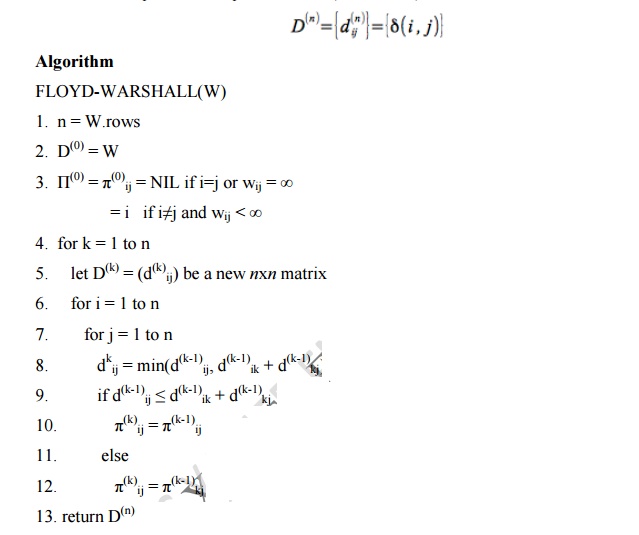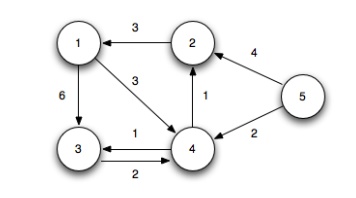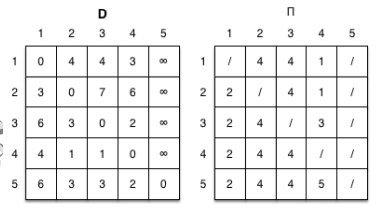Chapter: Programming and Data structures : Graphs
Floyd - Warshall Algorithm
FLOYD -
WARSHALL ALGORITHM:
The
Floyd-Warshall algorithm works based on a property of intermediate vertices of a shortest path. An intermediate vertex for a path p
= <v1, v2, ..., vj> is any vertex other than v1 or vj.
If the
vertices of a graph G are indexed by
{1, 2, ..., n}, then consider a
subset of vertices {1, 2, ..., k}.
Assume p is a minimum weight path
from vertex i to vertex j whose intermediate vertices are drawn
from the subset {1, 2, ..., k}. If we
consider vertex k on the path then
either:
·
k is not an intermediate vertex of p (i.e. is not used in the minimum
weight path)
⇒ All
intermediate vertices are in {1, 2, ..., k-1}
·
k is an
intermediate vertex of p (i.e. is
used in the minimum weight path)
⇒ We can
divide p at k giving two subpaths p1
and p2 giving vi ↝ k ↝ vj
⇒ Subpaths p1 and p2 are shortest paths with intermediate vertices in {1,
2, ..., k-1}
Thus if
we define a quantity d(k)ij
as the minimum weight of the path from vertex i to vertex j with
intermediate vertices drawn from the set {1, 2, ..., k} the above properties give the following recursive solution

Thus we
can represent the optimal values (when k
= n) in a matrix as

Basically
the algorithm works by repeatedly exploring paths between every pair using each
vertex as an intermediate vertex. Since Floyd-Warshall is simply three (tight)
nested loops, the run time is clearly O(V3).
Example:

Initialization: (k = 0)

Iteration 1: (k = 1) Shorter paths from 2 ↝ 3 and 2 ↝ 4 are
found through vertex 1

Iteration 2: (k = 2) Shorter paths from 4 ↝ 1, 5 ↝ 1, and 5 ↝ 3 are
found through vertex 2

Iteration 3: (k = 3) No shorter paths are found through vertex 3

Iteration 4: (k = 4) Shorter paths from 1 ↝ 2, 1 ↝ 3, 2 ↝ 3, 3 ↝ 1, 3 ↝ 2, 5 ↝ 1, 5 ↝ 2, 5 ↝ 3, and 5 ↝ 4 are found through vertex 4

Iteration 5: (k = 5) No shorter paths are found through vertex 5

The final
shortest paths for all pairs is given by

Transitive Closure
Floyd-Warshall
can be used to determine whether or not a graph has transitive closure, i.e. whether or not there are paths between all
vertices.
·
Assign all edges in the graph to have weight = 1
·
Run Floyd-Warshall
· Check if all dij < n
Related Topics